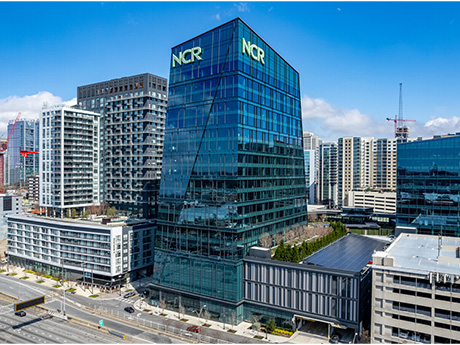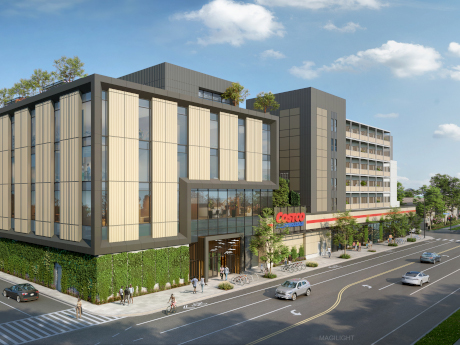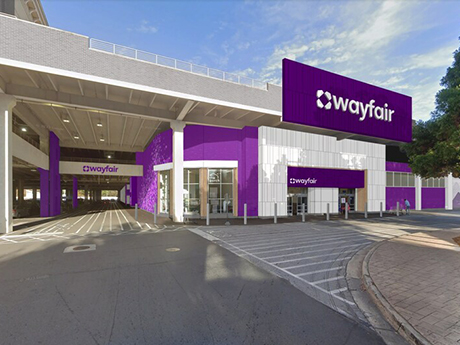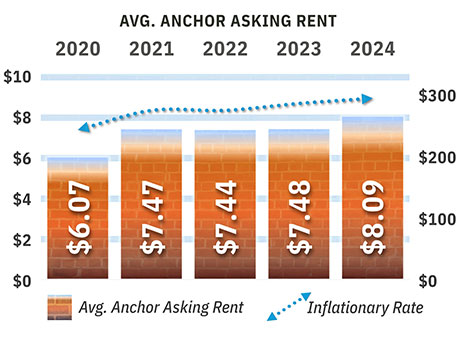Tenants are battling it out for Atlanta’s top-tier office space as trophy availability tightens and new office construction draws to a halt. With no end to the flight-to-quality trend in sight, Class B assets accounted for a whopping 70 percent of the market’s overall negative absorption (-736,682 square feet total net) in the first quarter of 2025, while Trophy assets recorded positive absorption (+114,579 square feet). Furthermore, office buildings that delivered between 2016 and 2021, which amount to almost 14 million square feet of space, currently average 92 percent occupancy. This underscores the growing divide between the haves and have-nots in Atlanta’s office market. Premium space in demand As office leasing activity reaches its highest level since 2019, decision-makers face a rapidly evolving landscape where securing the right space requires a highly motivated and strategic approach. With rising attendance mandates, workforce expansion and a limited supply of premium office space, competition for the best locations is intensifying. In Atlanta, submarkets like Midtown and Central Perimeter continue to outperform. Mini submarkets surrounding mixed-use districts like Avalon and The Battery (i.e. “urban-edge” in the suburbs) are also in high demand among tenants craving walkability and upscale amenities in the metro’s most sought-after …
Market Reports
By Ethan Elser, PACE Equity In today’s turbulent commercial real estate landscape, developers and property owners face challenges to secure sufficient competitively priced capital. High interest rates, compressed valuations and a low leverage lending environment have complicated funding strategies and eroded traditional capital stack assumptions. More and more, property owners and developers are turning to Commercial Property Assessed Clean Energy (C-PACE) financing due to its core attributes: low cost, nonrecourse, long-term and fixed-rate capital. With amortization periods of up to 30 years, owners and developers recognize that C-PACE terms are virtually unmatched in the private debt markets. As an assessment tied to the property rather than the borrower, C-PACE funding is being leveraged more than ever to support creative solutions in today’s marketplace. C-PACE has evolved into a dynamic financial tool used across the lifecycle of a building — from new construction to recapitalizations to retrofits. C-PACE is used by savvy commercial real estate professionals to optimize their capital structure and boost their internal rate of return (IRR). Identifying the financial utility of C-PACE in a shifting market C-PACE is growing in popularity as an alternative to mezzanine debt, preferred equity and other high-cost financing. In today’s environment, C-PACE is …
By Taylor Williams The retail markets throughout the greater New York City area have been starving for more quality space in the post-pandemic era, with ground-up supply gains rarely hitting the market outside of obligatory inclusions within apartment buildings and highly curated clusters at mixed-use developments. According to JLL’s latest market report on New York City, as of the first quarter of 2025, there were approximately 200 availabilities across Manhattan’s “prime” retail submarkets — a record low. Average asking rents leapt 7.4 percent between the fourth quarter of 2024 and the ensuing period, settling at a rate of $577 per square foot. The report identified traditionally ritzy retail corridors and hotspots such as Fifth Avenue, Madison Avenue, SoHo and Times Square as recipients of the “prime” label, also designating the Williamsburg district in Brooklyn as one such area. So when well-located spaces formerly occupied by retailers that are now defunct or aggressively downsizing become available, they tend to draw major, immediate interest. “Expanding retailers have substantial opportunities to backfill big box and junior spaces vacated by bankrupt chains,” says Mitzi Flexer, managing director in the New York City office of national brokerage firm Bradford Allen. Flexer says that a notable …
— By Kalli Knight of Colliers — The Los Angeles multifamily market faces several headwinds, including rising expenses, the aftermath of recent fires, insurance exclusions and Measure ULA. These factors impact transaction volumes, leading many investors to remain on the sidelines. However, Southern California and Los Angeles will continue to have strong fundamentals, attracting a unique pool of buyers. This includes qualified, high-net-worth family offices eager to take advantage of limited competition to acquire new construction at prices below replacement costs or favorable debt terms. Management companies are increasingly critical in supporting property stabilization post-pandemic, with a growing urgency to enhance operations and increase net operating income. As construction loans mature, their impact on property stabilization is significant. Though the concession rate of 0.7 percent is significantly less than the national concession rate of 1.1 percent, many developers now offer four to six weeks of concessions to lease properties and meet projected rents outlined in their financial analyses. Some developers have also opted for creative strategies, such as providing customized closets to attract renters at higher luxury price points instead of relying solely on weekly concessions. Vacancy rates in the market vary, but have generally improved since 2024. They have …
The last four quarters in the Atlanta industrial market were something akin to a good old-fashioned roller coaster ride at the historic Southeastern Fairgrounds! The absorption, activity and new construction sectors all went for a somewhat bumpy ride this past year. What’s happening? First, the quarterly absorption numbers for the Atlanta industrial market have been anything but steady. Eight quarters ago there was 7.9 million square feet of positive net absorption, followed by five negative quarters in a row (totaling 13.2 million square feet), then came two positive quarters (totaling 7 million square feet) and then back down to 2.8 million square feet of negative net absorption for the first quarter of 2025. The annual absorption numbers were up and down as well. The last four quarters yielded 2.2 million square feet of positive net absorption, but a year ago, at this same time, the absorption numbers plummeted down to a negative 11.3 million square feet. Two years ago, the industrial market experienced 32.5 million square feet of positive net absorption. Second, the activity numbers also were up and down. The second quarter of 2024 recorded 14.4 million square feet of activity, but that number dropped to 13.6 million …
By Joshua Turner, Landmark Commercial Real Estate The commercial real estate market in Wichita and South Central Kansas has shown remarkable resilience and growth in recent years. Following the challenges of the pandemic, the region has not only recovered but is now thriving. Wichita’s central location and business-friendly environment have long attracted investments in retail, office, industrial and mixed-use developments. Prior to the pandemic, low vacancy rates and steady rent growth indicated a strong and promising market. While retail and office spaces experienced temporary setbacks due to shifting work and consumer habits, the industrial sector remained active, fueled by e-commerce demand. The region’s lower costs and pro-business climate helped it weather economic fluctuations better than many larger metro areas. Since 2021, Wichita’s commercial real estate market has experienced an impressive resurgence. The industrial sector is booming, driven by manufacturing, logistics and distribution expansion. Retail has adapted to evolving consumer preferences, with experiential and mixed-use developments gaining popularity. Office spaces are being reimagined to accommodate hybrid work models, offering flexible solutions that meet modern business needs. Wichita’s population has steadily grown over the past decade, reflecting the city’s increasing economic opportunities and high quality of life. Currently home to nearly 400,000 …
By Taylor Williams Sometimes you just have to keep it real. In the world of mixed-use retail, featuring a blend of shops, restaurants and entertainment venues that is both unique in its totality and true to its surrounding market on individual levels is crucial to placemaking. As a concept, placemaking is somewhat difficult to define on paper but fairly easy to identify in the moment — the undeniable sense that the combination of what you are buying, eating, drinking and experiencing is simply not replicable anywhere else. Placemaking is, ironically, an idea that is very difficult to quantify, yet is intrinsically worth every dollar spent on design, construction and marketing — and then some. A longtime developer of mixed-use properties in Dallas once told this writer that the idea of bringing together a critical mass of residential, office and hospitality uses within one site — threaded and connected by retail, restaurants, green spaces and walkable infrastructure — is only novel to American consumers. Europeans have lived, worked and played that way for decades. And thanks to rolling swaths of land, surging population growth, rapidly evolving public infrastructure and the good-ole pro-business mindset, Texas has positioned itself as a leader in …
— By Tony Solomon of Marcus & Millichap — The positive relationship between retailers and rooftops is proving true in key ways across Los Angeles County. The market’s retail vacancy has risen in recent years — with the metro-wide rate up 120 basis points since 2022 – but the overall measure of 6.5 percent belies strong local dynamics. Retailers are continuing to find opportunities, especially in zones with recent and upcoming residential growth. Multifamily vacancy dropped by 50 basis points or more last year in the Santa Clarita Valley, Southeast Los Angeles and the South San Gabriel Valley. These same submarkets recorded retail vacancy rates at or under 5.2 percent at the onset of this year, which are some of the lowest in the county. Property performance momentum is set to continue in those areas amid numerous upcoming move-ins, including from tenants like Savers and Planet Fitness. The growing local apartment sector is expected to help absorb the primary area of heightened availability: Downtown Los Angeles. Retail vacancy here jumped 220 basis points last year to 9.1 percent, more than 100 basis points above the next highest submarket. Thankfully, that vacancy pressure may begin to ease in the near future. …
Atlanta’s retail market is proving it knows how to adapt, evolve and outperform, even in the face of macroeconomic headwinds. Despite a moderation in leasing and investment sales activity in recent quarters, the city’s fundamentals remain strong. Vacancy rates are at historic lows, rent growth is outpacing the national average and population and income growth continue to fuel long-term demand. Demand and demographics With vacancy rates consistently under 4 percent, Atlanta remains one of the tightest retail markets in the country. The appetite for well-located retail space hasn’t waned, even as broader economic uncertainty has slowed transaction velocity. In fact, strong absorption numbers and a limited supply pipeline have bolstered landlord confidence and pricing power across the metro. What’s driving this resilience? A booming population, rising household incomes and a steady influx of corporate relocations. Employers like Microsoft, Google and Cisco are expanding their footprints, bringing with them jobs, workers and spending power. Some of this growth has been particularly noticeable in Midtown. Redevelopment playbook Instead of ground-up development, Atlanta’s growth strategy has increasingly focused on reinventing aging retail centers in prime locations. With construction costs high and land increasingly scarce, developers opt to reimagine what already exists. These projects …
By Duke Wheeler, Reichle Klein Group The ongoing redevelopment of nonfunctional department store structures such as Sears and Elder Beerman, along with the retenanting or repurposing of structures such as Kmart, Giant Eagle and Value City, paved the way for many statistical and actual market improvements in the greater Toledo, Ohio, trade area. This positive trend and message supersede the closing announcements from over the past several months. First, the numbers: The overall retail market vacancy rate improved from 11.5 percent to 8.3 percent over the prior five-year period. This represents approximately 650,000 square feet of positive absorption. Most of this absorption occurred among anchor space, defined for the purpose of this article as space 20,000 square feet or larger. The vacancy rate for anchor space improved from 11 percent to 5.1 percent. Self-storage played a large role as roughly 300,000 square feet of anchor retail space was converted by the storage industry. The balance of positive absorption can be attributed to pent-up retail demand as occupiers compete for well-located, existing space in a market with limited new construction and increased construction costs. In some cases, landlords have found or will find themselves better off with a replacement tenant than …









